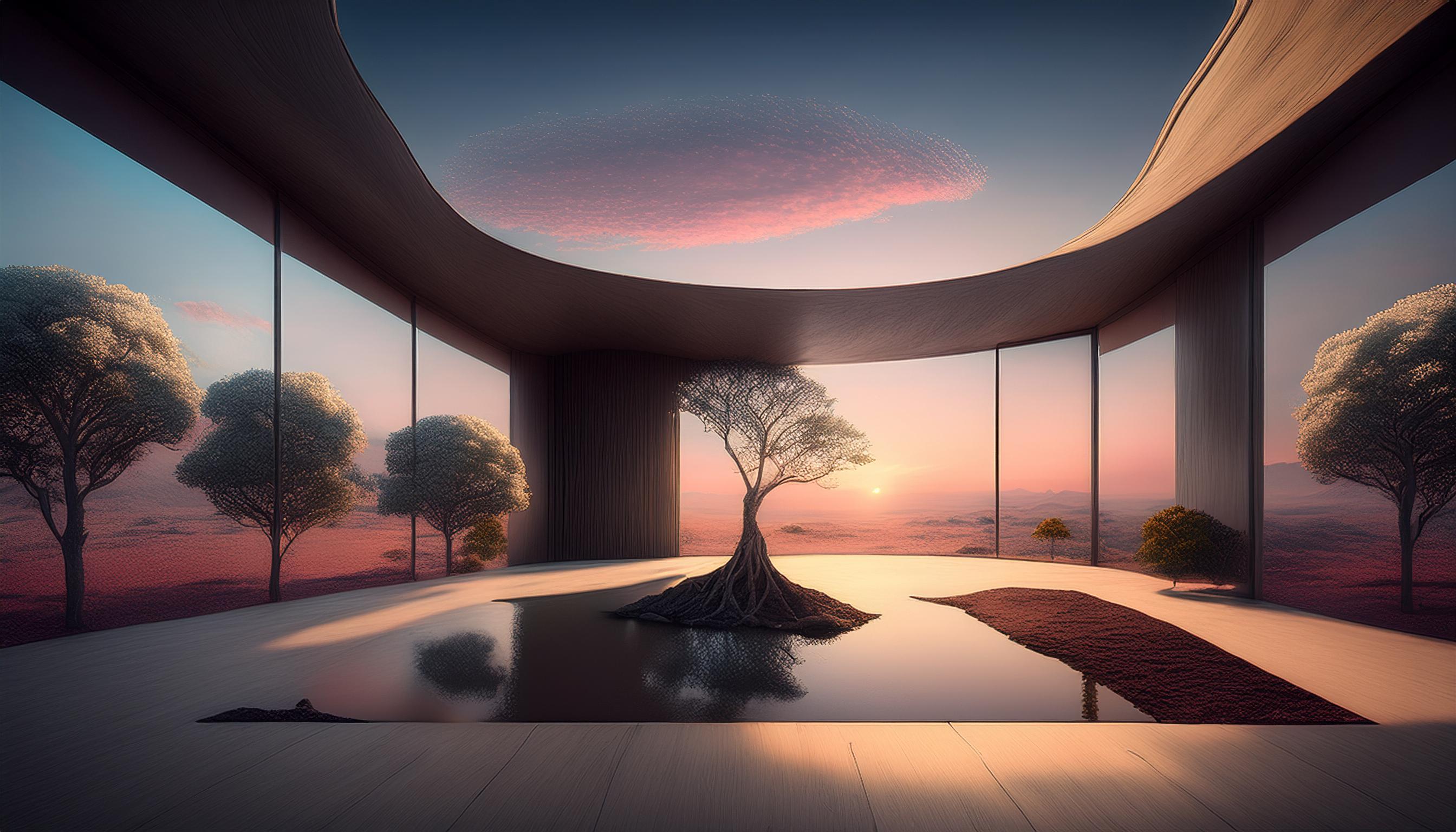
Author: Charrisse Johnston, FASID, LEED AP BD+C, WELL AP, Assoc. AIA
In the world of interior design, aesthetics often takes center stage. However, beyond a space’s visual appeal lies a deeper layer of design that directly impacts our emotions and mental well-being. Understanding how our brains perceive space on a neuropsychological level allows designers to create environments that not only look good but also feel good. In this article, we delve into the profound connection between design and emotions, exploring how intentional design choices can shape our mental well-being on three levels: physical comfort, psychological safety, and emotional fulfillment.
Physical Comfort: Beyond Visual Appeal
A visually stunning space can still disappoint if it fails to engage other senses. Whether it’s a noisy restaurant, an office with a strange smell, or a rough rug, discomfort can lead to mental distress. Our sensory experiences are interconnected, and a mismatch between visual appeal and other sensory inputs can cause discomfort. Proper acoustics are crucial; spaces that are too loud or too quiet can elicit anxiety and irritability. Addressing noise issues through thoughtful detailing of wall construction and the use of appropriate acoustic materials can significantly enhance comfort. Similarly, lighting plays a vital role; glare and harsh light contrasts can lead to distraction and stress. Installing proper window shading, using indirect lighting, and employing polished surfaces judiciously can improve visual comfort.
Temperature and olfactory elements also significantly impact our comfort. Rooms that are too hot or too cold can cause stress and cognitive impairment. Ensuring thermal comfort through adjustable thermostats and proper ventilation can make a big difference. Interestingly, when people can control their environment, they report greater comfort even without making actual changes. Of all the senses, smell packs the most emotional punch. Olfactory input travels directly to the brain's emotion and memory areas, which is why certain scents can instantly evoke memories and alter moods. Designing with pleasant scents in mind, whether through natural ventilation or intentional scenting strategies, can create a more comfortable and appealing environment.
Psychological Safety: Designing for Peace of Mind
After physical comfort, psychological safety is paramount. Design elements like lockable doors and visible sightlines contribute to a sense of security. Evolutionary preferences for prospect and refuge—seeing far distances while having places to hide—are still relevant today. Spaces that balance these elements, such as theater balconies or high-backed chairs, provide psychological soothing by allowing individuals to observe their surroundings while feeling protected. Additionally, clear wayfinding with wide doorways, high ceilings, and large windows makes spaces easier to navigate and more comforting.
Shapes and forms also influence our psychological safety. Curved forms are generally more appealing than angular or jagged ones, as they are perceived as safer and more welcoming. Research shows that people are more likely to linger in curved rooms, which feel more inviting and less threatening. This preference likely stems from evolutionary traits where curved objects posed less danger. Furthermore, incorporating subtle, nature-inspired sounds, like ocean waves or a crackling fire, can create calming environments. These sounds have been shown to reduce stress and anxiety, even in high-pressure settings like operating rooms, enhancing both patient and staff experiences.
Emotional Fulfillment: Creating Spaces of Wonder
Design can evoke higher-level emotions such as fascination, awe, and inspiration. Incorporating fractals, patterns that repeat at smaller scales, can engage and relax the mind. Fractals are found in nature, from snowflakes to tree branches, and they captivate us because they are complex yet understandable. Spaces that include fractal patterns, whether in architectural details or decor, invite closer inspection and promote a sense of relaxation and attentiveness. Awe-inspiring spaces, like St. Peter’s Basilica or the Great Pyramids, make us feel part of something greater and reduce ideological polarization. The feeling of awe can be triggered by grand, meticulously crafted spaces, which elicit a physical response of enlarged pupils, increased heart rate, and even sweaty palms, indicating a profound emotional impact.
Designing for delight involves more than just functionality; it’s about celebrating human culture and spirit. Using biophilic elements—design inspired by nature—can create a sense of connection to the natural world, enhancing emotional fulfillment. Public art, intricate details, and thoughtful use of color and texture show a deep care for the inhabitants' experiences. Spaces that focus on delight convey that the designers value not just practicality but also the emotional and psychological well-being of the users. This approach transforms spaces into places where people can feel inspired, connected, and truly at home.
Biophilia: Nature’s Role in Design
Biophilic design, which incorporates natural elements, reduces stress and enhances well-being. Terrapin Green’s 14 Patterns of Biophilic Design include elements like complexity, order, and thermal variability. Nature views have been shown to speed up recovery in patients and improve students' test scores. Exposure to natural daylight and circadian lighting can improve mood and cognitive function. Our brains evolved to thrive in nature, and incorporating these elements into design promotes emotional resilience and mental wellness.
The concept of biophilia explains why we instinctively feel better when connected to nature. Natural elements like plants, water features, and natural light not only beautify spaces but also support mental health. For instance, surgical patients with views of nature recover faster and with fewer complications than those with views of a brick wall. Classrooms with windows offering nature views have higher student test scores. These examples illustrate the profound impact of nature on our well-being, underscoring the importance of integrating biophilic elements into interior design to create harmonious, restorative environments.
Understanding the neuropsychological impacts of spatial experiences highlights the profound influence interior design has on emotions and mental well-being. By harnessing this knowledge, designers can create environments that are not only beautiful but also foster emotional resilience and mental wellness. As we explore the intersection of design and psychology, it becomes clear that interior design goes far beyond decorative trends—it has the power to improve lives and enhance the value professional interior designers bring to the built environment.
Interested in the full article? View the full editorial.
